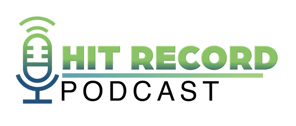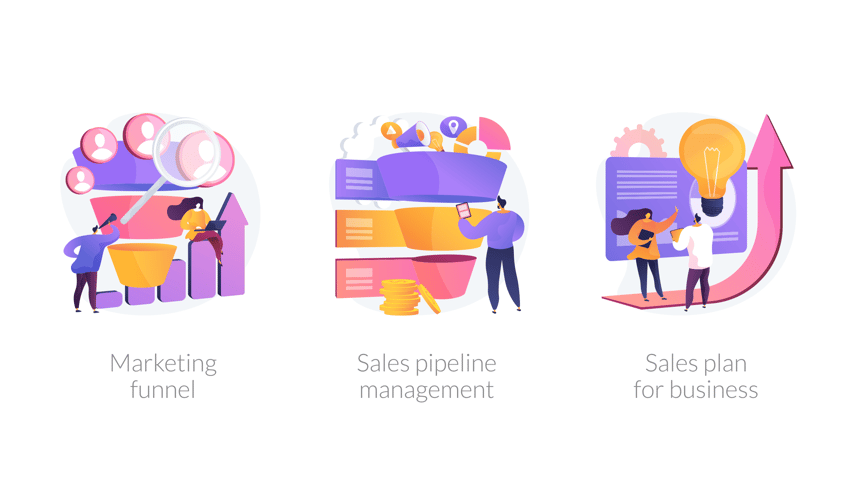Episode 83 - Can a Fast Website Solution be a Good Option for Banks and Credit Unions


Don't Miss An Episode, Subscribe Now

In this enlightening podcast episode, Meredith Olmstead, CEO of FI GROW Solutions, teams up with Kristin Mock, the firm's inbound marketing manager, to delve into the integration of AI in website development for financial institutions. They unpack the challenges and pitfalls of relying on AI and automated tools for creating or migrating websites for banks and credit unions, emphasizing the value of a tailored, strategic approach over quick fixes.
Key Takeaways:
-
Challenges with Auto-Migration: Transferring a website to a new platform often results in functional and design issues due to incompatibilities, leading to more time and effort spent on corrections, usually with suboptimal results.
-
Limitations of Templates and AI: Templates may offer a quick start but often require compromises that may not align with a financial institution's needs. AI-generated websites lack the depth needed for optimal user experience and SEO, making them unsuitable for banks and credit unions that require detailed, compliant, and customer-focused content.
-
Importance of a Tailored Approach: A custom redesign, though initially more costly and time-consuming, ensures a website is aligned with the latest technology, trends, and brand strategy, providing long-term value and better functionality.
Transcription:
Meredith Olmstead:
Hi there. I'm Meredith Olmstead, CEO and founder of FI GROW Solutions. We are a digital marketing and sales and service support organization. We work exclusively with banks and credit unions. And I am here today with Kristin Mock. Kristin is our inbound marketing manager. She's our inbound marketing strategist for all ... A bunch of our clients are credit union and bank clients, but also she runs all of our website projects. So say hi, Kristin.
Kristin Mock:
Hi.
Meredith Olmstead:
So we were talking in the last week or two about AI and AI specifically, and how it relates to website projects. And then we've also been getting a number of inquiries around this topic, which is kind of how we got to this subject. And so Kristin was doing some research and we've been doing a lot of digging, testing some different tools, and I was like, "I think this might be worth a conversation that we hit record on and talk about." So basically, what we want to talk about today is what credit unions or small community banks should be aware of when they're considering easy website solutions basically. That's the best way to say it. Basically, if you need to move your website from one host or one platform to another. Maybe something's happening and your one content management system is going out of business or something like that, you have to move that to another hosting platform altogether, or you need to build a new website and you're thinking, "Maybe I should use AI to build some or all of my new website for my bank or credit union."
We started getting into this because this is what our bread and butter is a lot of times. We have our retainer clients and we build a lot of websites, and we wanted to make sure that, "Hey, look. Maybe there are some AI tools out there or auto migration tools that we should be taking advantage of as well." So Kristin did some digging and she came back with a lot of really solid insights. So unpack that for me a little bit, Kristin. What are some of the things that we're going to be talking about? You kind of came up with three different things that we wanted to cover.
Kristin Mock:
Yeah, so the three categories that we really run into are people asking about auto migration tools, which is just, "Hey, my website's on this host and I want to move it over to this other platform. Is there a way to automatically move that?" The other one is templates. You'll see a lot of website platforms will have some basic templates that you can download, sometimes free, sometimes paid, and so then you don't have to go through a whole design and development phase. You can just download the free template and throw all of your content onto it. And then the third one is, like you said, AI. So now we're starting to see completely AI-built websites and tools to build your website with AI. So those are kind of the three categories we want to talk about.
Meredith Olmstead:
Okay. So the first one then, if you have your website on a proprietary content management system ... So it's not WordPress. It's not Squarespace. It's on something else. Maybe it's being hosted by a core provider, okay? Just a pretend scenario here, right? And you want to move that, but it needs to happen quickly. You don't want to go through the process of having to do a full redesign. Say you need to move it within a few months to something else. It's a different platform where you want it to look basically the same and you want to be able to make edits. Why is that not really a great idea, or what do people need to be understanding when they're thinking about this as an option?
Kristin Mock:
Yeah, so the way that your website was developed on the platform that it's on, you're not always going to have a 1:1 comparison on the new platform. And so what you're going to do is if you want everything to look and function exactly the same, but on a new platform, you're not always going to have that 1:1 comparison. So you're going to end up spending more time trying to fix and finagle every little solution to look exactly how it looks currently and end up spending more time and more effort doing that, and ending up with a worse product than what you started with.
Meredith Olmstead:
Yeah. I remember a client in kind of a pickle kind of situation like this, I can't even remember the content management system that they had it on, and they were kind of moving it all over to WordPress basically. There are tools that supposedly will scrape the content off the one platform, hold onto it for you, and dump it into the new one, one of the more familiar ones like a WordPress site or a content management system. And you end up with the images won't size right or they won't be laid out in the right way, or links will break, or they'll add a little extra code onto a link and you'll have broken links that trigger 404s. There's all these little, broken things often that you end up having to deal with, so it definitely can be a real headache.
And then when you think about it, a credit union or a bank has probably got 60, 70, 80 pages on their website. Can you imagine? Even if you had just a couple of broken links on every page that you moved over, somebody has to go through all of it and find all of that. That's a nightmare. So when people ask us about that, what do we tell them?
Kristin Mock:
I recommend just going through a redesign. I mean, if you're going to spend that much time and that much effort combing through every link, every page, every module, making sure it all works, just redesign it. Bring it up to the newest technology, the newest trends. Align it better with your more current brand. It's just really not worth wasting your time doing all of that fine-tuning and still getting something that's the same or worse.
Meredith Olmstead:
Yeah. Yeah. Most of the time, it's not the same. I would say probably 90% of the time it's probably a little bit worse. Even if it's a better content management system, a lot of times it's still worse than it used to work because it wasn't designed to be on that new content management system in the first place. Yeah. And honestly, in some ways what you might be able to do is if you have a really compressed timeframe, you might be able to go through a redesign and just say, "Look. We're going to launch with a minimum viable product basically." It's like, "Instead of launching with 60 pages or 70 finished SEO-optimized pages, maybe we launch with 40. We know we might be missing some really important things," but what you do is you launch on day one with the 40 and then just make a plan for three to five new pages every week or every two weeks until you get where you need to be. So it could be an opportunity there.
Okay, wait. What was the second one? I know you said AI. I can't even remember the second one.
Kristin Mock:
Basic templates.
Meredith Olmstead:
Oh, yeah, yeah, yeah. Okay.
Kristin Mock:
You get a lot of templated websites. Yeah.
Meredith Olmstead:
So yes, and we've done this before. So on HubSpot, HubSpot has a marketplace where you can go in and you can look at cool templates. They're basically like blank pages with different kinds of modules and functionality, and then you have to go in and place all of the content. So you can download a template, change the main colors, put your logo in there, and then boom, you've got all of these blank pages that you can clone and copy and then add content in. What's wrong with that?
Kristin Mock:
These work if you're a very small business, but if you're looking at something the size of even a smaller bank or credit union, it's all about control and being able to edit certain things in the template. So maybe you can change the colors, maybe you can change the fonts, but you're going to find yourself scrolling through hundreds or thousands of these templates to try to find the one that you like or that your executive team likes. And then you're going to make compromises left and right on, "Well, I really like X about this one and Y about that one, but we only can choose one template," and so you're not really getting a great solution. And so sure, these work, but you're just not going to get what's the best for you or your institution if you just download some basic, free template.
Meredith Olmstead:
Yeah. And we've used basic templates for the FI GROW website when we've redone our FI GROW website in the past, but we're not a financial institution, right? We've got 20 pages about marketing services and a blog that we add to a lot of the time, and maybe a case study page. But a financial institution has hundreds of requirements from the compliance side that they have to fulfill. A lot of times, they've got all of this nuance content that needs to live on product pages, service pages, all those kinds of things. Got rate tables, rates that have to be able to be updated, and all your disclosures. Very difficult to find a template that would kind of meet all of those requirements.
So what ends up happening though, and I say this about our FI GROW templates, even when we would download a FI GROW template for a simple, small business, you didn't have good tech support when you had a template. You would have to email the developer of the template and hope that they might fix something if you find a bug. Sometimes, they do. Sometimes, they charge you for it. If you want to make revisions or changes at the design level or at the developer level, sometimes you can. Sometimes, the design or the development side is locked and you can't even get in there. So it really isn't great when it comes to functionality and you end up having to spend time digging in to figure out how to solve problems rather than using a team that you've already hired that are there to create it for you without problems in the first place. So yeah, that's true. That's a good one.
And then the last one we talked about was AI. Can't we go in and customize our brand and our tone in ChatGPT or one of these other generative AI tools and write our content that way?
Kristin Mock:
You can. It can be done. There's even AI tools that are like, "Answer four questions and we'll build an entire website for you." But as you can imagine, it's not going to be a great product and it's not going to be SEO-optimized. So when it comes to design, you're running into the same types of problems as we did with a template. Except in this case, you didn't even scroll thousands of templates and pick which one everybody likes. You just went, "AI, what should I go with?" and they just picked something for you, so you don't even get a say in it in a lot of cases. And then with SEO ...
Meredith Olmstead:
Well, I was just going to say you tested the AI builder. Did you test the AI website builder with HubSpot's tool?
Kristin Mock:
I did, and HubSpot is implementing a lot of AI things and some of it's really great. Some of it's not there yet. And they've got this AI tool where you answer, I think, three or four questions and then it takes what it knows about you, the content that's already in there, and it built a single page website is what it did right now. So I'm sure they're going to improve it, but I still wouldn't rely on it for an entire website for a financial institution especially.
Meredith Olmstead:
Yeah. I mean, it's funny. Even when you work with a new developer who hasn't worked with a lot of financial institutions, not a template, not AI, not an automatic migration tool, but an actual person, an actual developer with the designer and all of the know-how, when you work with them and they haven't built a lot of websites for banks or credit unions, they're kind of lost in the sauce. So you have to come in with a tremendous amount of strategy, talk about how the site structure needs to be handled, making sure they understand all the different functionality that has to be there, all the requirements for content, the user experience, everything. There's 1,000 things. So to try to think that you could have some kind of generative AI know everything that you know about just building in that one vertical of financial institutions would be pretty unrealistic.
Kristin Mock:
AI was not great at site structure and it's not great at SEO either, even if you're just trying to use it to say, "Hey, optimize this content. Optimize this sentence, this paragraph for for SEO." We've done that and it might change some things and it might give you some keywords. But whenever you compare that to actual search volume data, so far, no tool has lined up. We've tried it all.
Meredith Olmstead:
Yeah.
Kristin Mock:
So I mean, AI can be great to assist you on different stages of a website build, but having it do the whole thing or even large chunks of it, that's a no-go.
Meredith Olmstead:
Yeah. We use it a lot for ideas, starting points, subject lines, even for emails, titles or headers, header tags, alt tags potentially for a photo. You can tell them what's in the photo and ask them to write an alt tag with this keyword or something like that. But I mean, even then a lot of times, by the time you get there, you could have just done it yourself if you really want to be strategic. So I mean, the key takeaway here, and of course probably nobody's really surprised by this, we are a marketing agency, but we definitely don't think that there's a fast way to replace all of the value you get from going through a full website redesign.
I think the key that I like to try to remind people of is that you get what you pay for. And so if you feel like, "Oh, look. This agency is telling me they're going to be able to deliver a finished product with all of my content for $50,000, say," that might sound like a lot of money to some people. $50,000 on a website, that seems like a lot, right? But the depth of functionality of that website is probably not very good. It probably doesn't have personalized content at the user level. It probably doesn't have a built-in way to track people's behavior across pages or across to emails and those kinds of things, and then customize their experience. So there's a lot of depth of functionality that's probably not there.
And more than likely what ends up happening is after you spend that first $50,000 in 18 months or 12 months, you're going to be like, "Wow. I really wish our website could do X or Y or Z or X, Y and Z. Darn it. We really should have spent more a year ago. Okay. Well, now let's start again. Now let's go back out. Let's find another agency. Let's price it again." Now how much do you think it's going to cost you? Instead of $50,000, if you really want the depth of functionality it's probably pushing $200,000 in a year and a half or two years when you could have probably got what you wanted right out of the bat, and then it would've lasted you for probably three to five years. So you end up spending more over time to get the exact same thing. Anything else you want to say here, Kristin?
Kristin Mock:
Yeah. I mean, I guess I would just add that in today's digital world, and especially as the younger generations come up, your website may be the only way that one of your members ever interacts with you. So trying to do it fast, trying to do it cheap, just do it right.
Meredith Olmstead:
Yeah.
Kristin Mock:
Quit trying to cut corners because it may be the only way that your audience ever sees you.
Meredith Olmstead:
Yeah. And I mean, as the older population is moving up and we have this younger, digital native population getting older and coming into those prime lending years and consumer years, this idea that you can not put priorities towards your digital assets like your website, your mobile app, or your online account opening, or any of those kinds of resources is crazy to me. It'd be worth it to close a branch and save the money from a brick-and-mortar branch and put that into your website before I would skimp on a website project for sure. Awesome. Well, thank you so much, Kristin. I appreciate your time and doing all this digging. I know this was kind of fun for you actually because you came back after doing the AI testing and you were like, "Wow, that was horrible." But if you're interested in learning more about digital marketing for your bank or credit union, please visit us at figrow.com. We have lots of other podcasts, case studies, all kinds of great resources and blogs. So otherwise, let's just all get out there and make it happen.









Blog comments